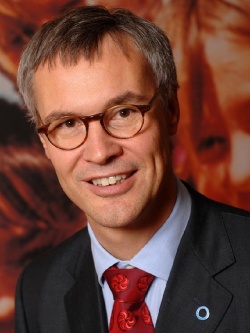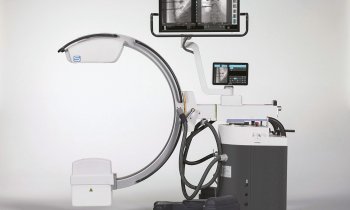SWEET news: A paediatric diabetes network
European centres of reference for paediatric diabetes demand improved cross-border cooperationReport: Karoline Laarmann
For three years the SWEET project, funded by the EU and the International Society for Paediatric and Adolescent Diabetes (ISPAD), has been preparing the establishment of centres of reference (CORs) for childhood diabetes. Now, the first 12 European CORs that are certified by SWEET have joined forces to promote improved cross-border cooperation in the treatment of young Type 1 and Type 2 diabetics.

Professor Thomas Danne, director of SWEET, Secretary General of ISPAD and Senior Consultant at the ‘auf der Bult’ paediatric hospital in Hannover, Germany, explains why there is a need for cross-border centres and the major objectives of the European networ.
Prof. Danne: ‘Currently, the quality of care of paediatric diabetics differs widely among the European centres. Not only between countries but also within facilities, metabolic objectives such as HbA1c, hypoglycaemia or the frequency of ketacedosis are achieved to varying degrees either due to socio-economic reasons or therapy strategies.
‘We therefore want to promote the exchange of knowledge and best practices and to find out why some centres are more successful in reaching the metabolic objectives than others. Furthermore, we’d like to introduce standardised quality assurance measures to improve diagnosis and control Type 1 or Type 2 diabetes in children and adolescents.
‘Another aspect we are concerned about is the fact that we are confronted with ever more complex and more expensive therapies, particularly with an increased orientation towards technology in the therapy. We want the CORs to help evaluate the usefulness of these therapies.'
Currently, are there country-specific differences?
‘Italian centres are very successful whilst, in an international comparison, British centres do less well. This is not primarily a result of a country’s economic situation but of the care concepts for paediatric diabetics.
‘Insulin therapies for children differ significantly from those for adults because physical development and everyday life differ significantly. Nevertheless in many countries there are neither paediatric diabetologists, nor diabetes consultants or age-specific training programmes. In some countries on the other hand, such as France, well organised patient self-help groups take on many educational tasks.’
What is the accreditation procedure for a centre of reference like?
‘Facilities that want to be accredited as centres of reference have to submit long-term data of at least 150 patients, or record the data in an electronic patient record -- an EPR.
‘The EPA system offers a function which anonymises data and loads them onto a server for statistical evaluation and comparison purposes. Additionally, the centres are audited for compliance with the relevant quality criteria. If a centre fulfils all these requirements accreditation is awarded for three years.
‘During the accreditation period all data are reviewed and discussed twice a year by a quality panel. This is particularly interesting for the CORs because they can see where they stand compared to other centres.’
Which research objectives can the centres help to reach?
‘Obviously registers, as provided by the centres, will facilitate research on rare forms of diabetes such as monogenic diabetes. However, more importantly we expect the reference centres to take on a leading role in the development of diabetes technology, with regard to telemedicine, for example, but also as far as insulin pumps and continuous glucose monitors are concerned.
‘In the context of the project DREAM, we are already testing an artificial pancreas – a device that combines an insulin pump and a glucose monitoring sensor and which we hope will regulate the metabolism during the night.
‘The study is being performed at three major paediatric diabetes centres in Tel Aviv, Ljubljana and here in Hannover and the initial results were very promising.
‘For seven patients we recorded a decrease of average glucose levels from 182 to 126 mg/dl compared to conventional insulin pump therapies in twelve sessions. At the same time the periods of time when the targeted glucose level of 63 to 140 mg/dl was achieved, increased from 29% to 77%.
‘We cannot yet use the artificial pancreas during the day because the algorithm that detects post-prandial glucose increases is too slow. But I am confident that we can solve this problem as soon as faster acting insulin is available.’
Further details: http://www.sweet-project.eu/
20.06.2011










